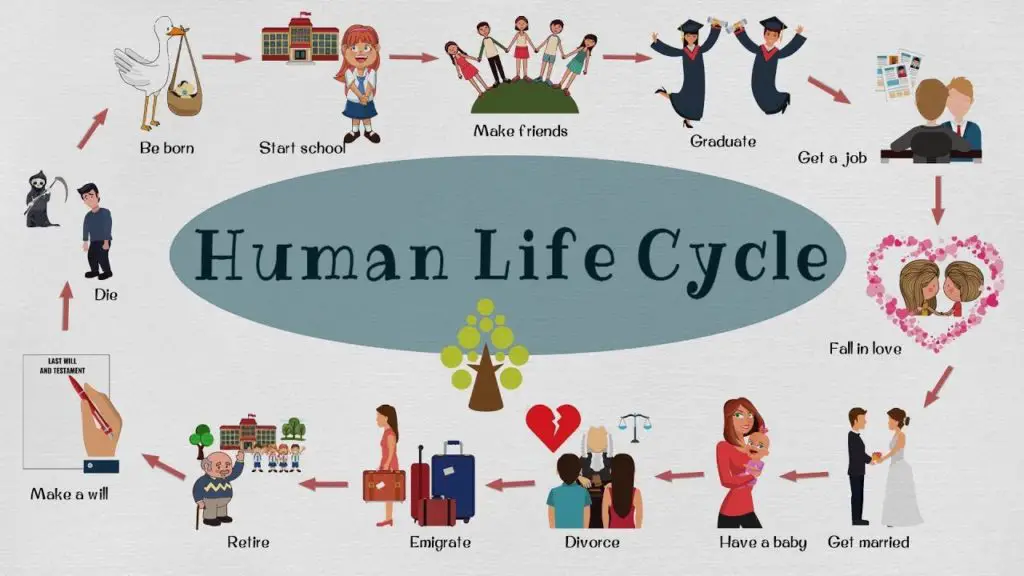Co-Writer: April Joy E. Jaca
Introduction
Aging becomes a crucial aspect of our lives as life cycle spins as we move through the years since life is an ever-changing canvas.
But as our understanding of aging has developed, we now see that it may be a springboard for a life cycle of healthy aging—a journey full of energy, meaning, and joy. The secrets to a successful life cycle will be revealed in this article, along with advice and thoughts on how to accept the route to healthy aging.
Table of Contents

6 Paths to a Life Cycle of Healthy Aging
1. Taking Care of Your Body
Fostering physical well-being in regards the life of peson’s life cycle is a good starting point for healthy aging. Maintaining strength, flexibility, and cardiovascular health requires regular exercise. The benefits of physical activity extend to our mental health as well as our physical health. Choose enjoyable exercises like walking, swimming, cycling, zumba or dancing, and set a weekly goal of at least 150 minutes of moderate-intensity activity.
Prioritizing a healthy diet for a healthy life in your life cycle is crucial for enhancing physical wellbeing. Your meals should contain a mix of fresh fruits, vegetables, whole grains, lean meats, and healthy fats. Limit your intake of sugary beverages and drink plenty of water to stay hydrated. Prioritize getting enough sleep as well so that your body can relax and recover.
Regular preventative healthcare check-ups must be attended in order to guarantee overall health. These check-ups include tests and immunizations that can aid in identifying any health concerns in their early stages and halt the progression of more serious disorders.
2. The Promotion of Mental Stimulation Maintaining mental acuity is essential for a healthy life cycle and aging. Maintaining mental flexibility and general brain health may be achieved by participating in activities that both challenge and excite cognitive function. The mind should be kept busy and engaged by reading books, doing puzzles, learning an instrument, and taking up new activities.
Continuous learning is an effective method for keeping the mind active. Consider enrolling in online courses or attending lessons in fields that interest you. Your knowledge will grow as a result, and it will also help you become more adaptable and flexible mentally.
Additionally, having meaningful connections and engaging in social activities both have a big impact on cognitive health. The mind is stimulated and intellectual progress is promoted by engaging in group activities, having conversations, and interacting with friends and family.
3. Putting Emotional Wellness First
A meaningful life cycle of healthy aging is built on emotional well-being. Making emotional wellbeing a priority entails implementing routines that reduce stress, promote self-awareness, and strengthen emotional resilience.
Effective stress-reduction methods that support emotional well-being include mindfulness meditation, deep breathing exercises, and journaling. These techniques aid in mental peace, anxiety reduction, and heightened self-awareness.
The key to keeping your emotions in check is to ask for help when you need it from family, friends, or counselors. It is critical to understand that asking for assistance is a show of strength, not weakness. Sometimes, talking to someone who can offer direction and support may significantly impact how we feel emotionally.
Another crucial component of mental wellbeing is partaking in enjoyable and relaxing activities. The emotional well-being may be greatly improved by engaging in activities that feed the soul, exploring artistic outlets, or spending time in nature. Taking care of our emotional well-being enables us to face the difficulties of life with grace and fortitude.

4. Promoting Social Interactions
Healthy aging depends on having strong social bonds. Due to our innate social nature, it is essential for our general wellbeing to maintain healthy social relationships. Regularly engage with your family, friends, and the people in your neighborhood. Plan social events, excursions, or activities that include everyone. Become a member of groups, clubs, or volunteer for causes that share your interests and principles. Participating in group activities and neighborhood events offers chances for social interaction and promotes a sense of connection and belonging.
Fostering social connections requires developing and maintaining relationships with others. Make contact with friends and family, plan frequent get-togethers or phone conversations, and actively engage in social activities. The development of a support system that may offer companionship, emotional support, and a sense of belonging throughout the aging process is facilitated by engaging in meaningful discussions and sharing experiences.
You can meet others who share your interests by joining clubs, organizations, or community groups relevant to them. This can help you grow your social network. These activities offer chances for shared experiences, companionship, and the ability to work toward similar objectives. In addition to helping others, volunteering for causes that are meaningful to you also puts you in touch with others who have similar interests and beliefs to your own.
Support groups are also excellent tools for establishing interpersonal relationships. These organizations offer a secure setting where members may openly discuss their struggles, victories, and experiences with others who are dealing with comparable issues. These groups offer comprehension, empathy, and encouragement, whether they are for carers, people with certain health challenges, or those going through life transitions.
5. Maintaining a Life of Purpose
Life cycle of healthy aging is fueled by having a sense of purpose. It gives our life purpose and direction, motivates us, and promotes general contentment and well-being. Take part in pursuits that are consistent with your ideals and passions. Investigate new pastimes, interests, or creative endeavors that make you happy and fulfilled. Volunteer for causes or community projects that align with your values and enable you to have a good influence on people’s lives. Another worthwhile method of giving back and imparting your expertise and experiences to others is through mentoring.
Maintaining a purposeful existence requires taking the time to think on your life’s objectives and ideals as well as to practice thankfulness. Spend some time appreciating the present and expressing your thankfulness for your benefits. Set objectives that are in line with your hobbies and desires after giving it some thought. Having a purpose in life not only makes you feel fulfilled, but it also improves your attitude on life and makes you feel better overall.
6. Getting Accustomed to Change
It becomes increasingly important to embrace change as we move through the life cycle. Physical, mental, and behavioral changes brought on by aging necessitate flexibility and perseverance. For one to sustain a life cycle of good aging, it is essential to acknowledge and embrace these changes.
Adopt a growth attitude that values new encounters, difficulties, and chances for personal development. Be willing to experiment, pick up new abilities, and push yourself outside your comfort zone. You may go through changes more easily and adaptably if you embrace change with curiosity and a positive outlook.
When necessary, ask family, friends, or experts for help. Make sure you have a solid support system around you that can provide you advice, inspiration, and help when things are changing. Asking for assistance is a show of strength and self-awareness rather than weakness.
Conclusion
In summary, embracing a life cycle of healthy aging is a journey that entails promoting physical wellbeing, challenging the intellect, placing an emphasis on emotional wellness, encouraging social relationships, preserving a sense of purpose, and accepting change.
We may unleash the potential for a vigorous and satisfying existence at every stage of life cycle of healthy againg by adhering to these principles. Let’s travel this transformational journey together and prosper throughout time.
Inspiring Bible Verse
2 Corinthians 4:16 Therefore we do not lose heart. Though outwardly we are wasting away, yet inwardly we are being renewed day by day.
Because of so many factors busy at work, business and family, we are sometimes incapable to follow the life cycle of a healthy aging, but if you look to the Word of God that inwardly we are being renewed day by day, that is the true fulfillment of life, so never lose heart. We have hope as God promised, and that’s what awaits us.
External Link
- https://www.tandfonline.com/doi/abs/10.1080/10402659.2012.704325?journalCode=cper20
- :https://www.sciencedirect.com/science/article/pii/S2212567116000848
References
- Blagojevic, B., & Jordan, L. (2012). Human development tree life cycle model. Peace Review, 24(3), 340-348.
- Muda, S., & Rahman, M. R. C. A. (2016). Human capital in SMEs life cycle perspective. Procedia Economics and Finance, 35, 683-689.



